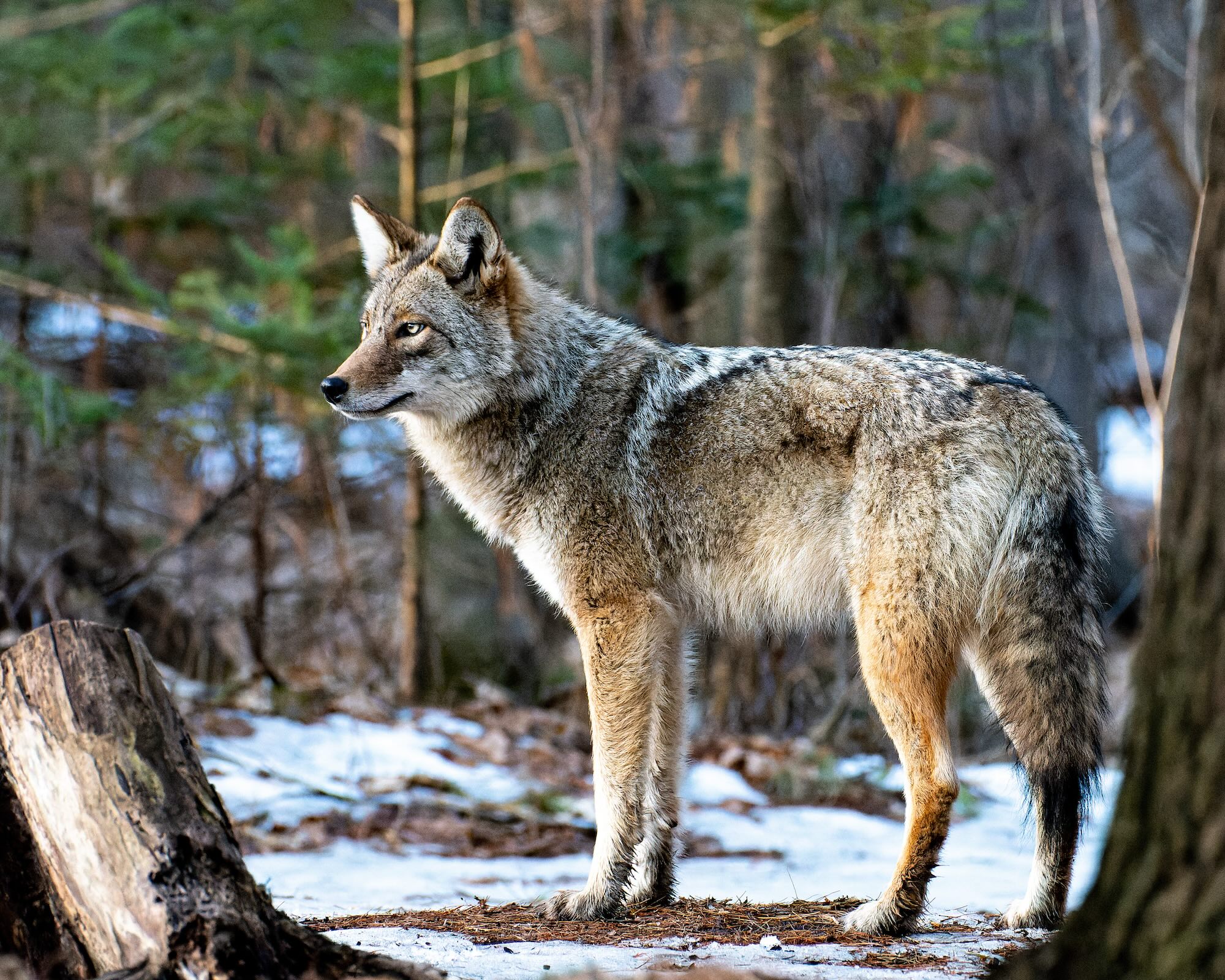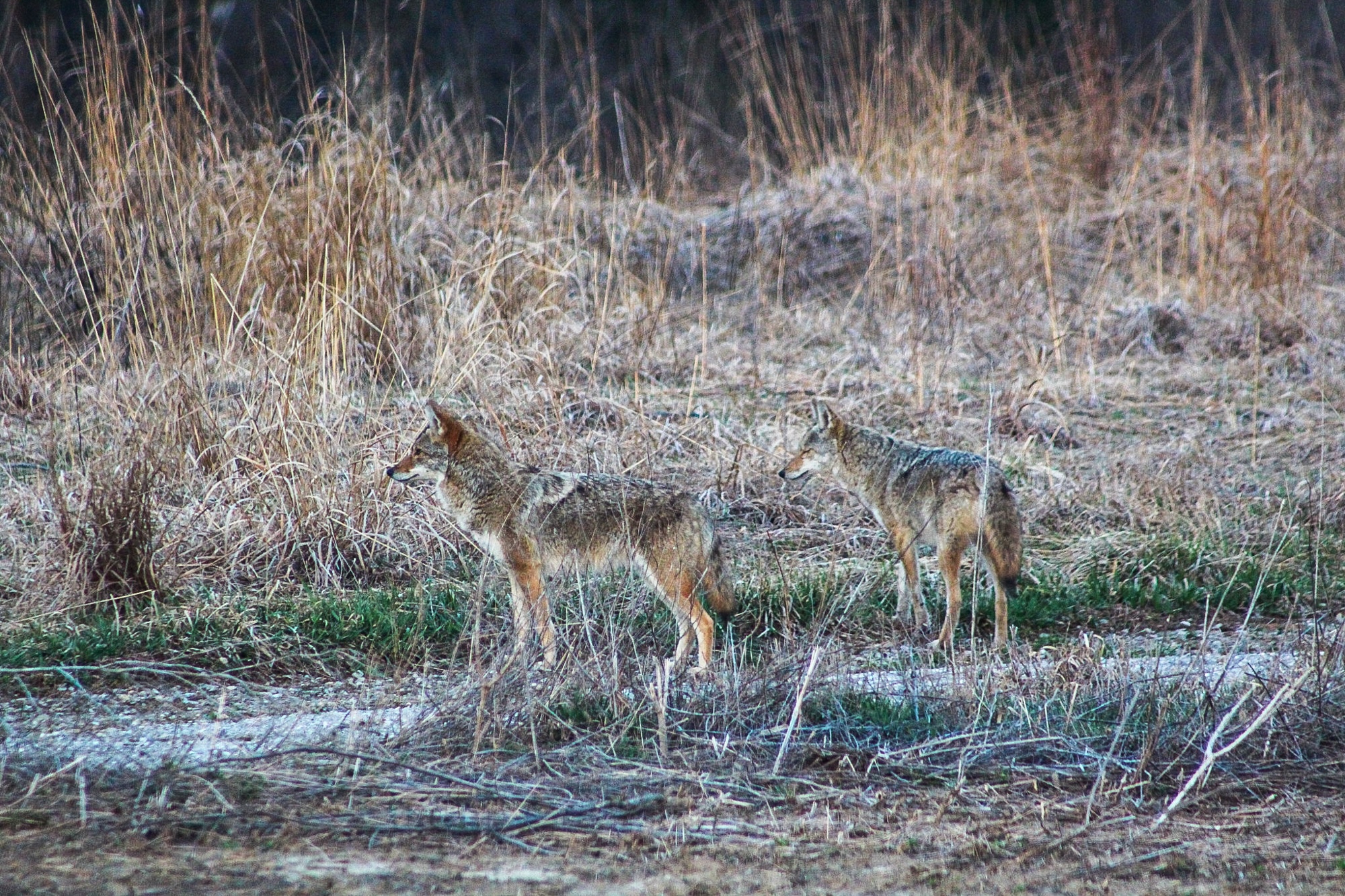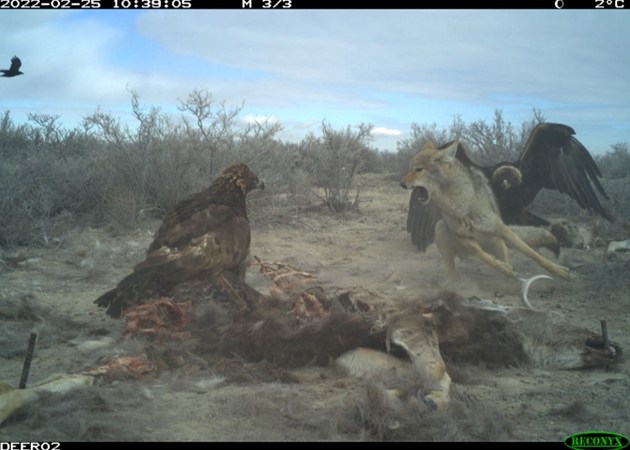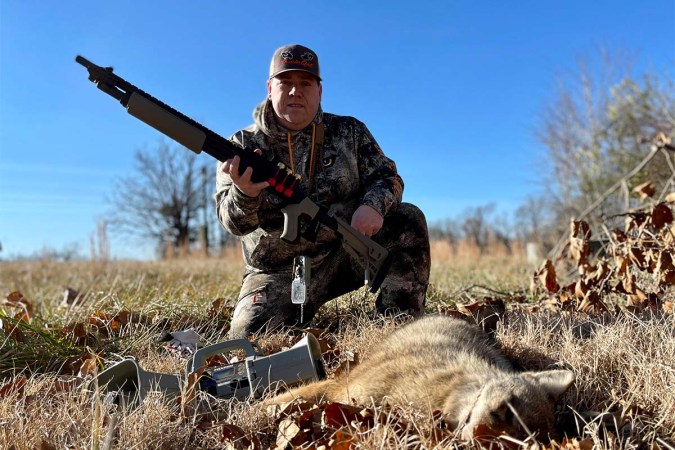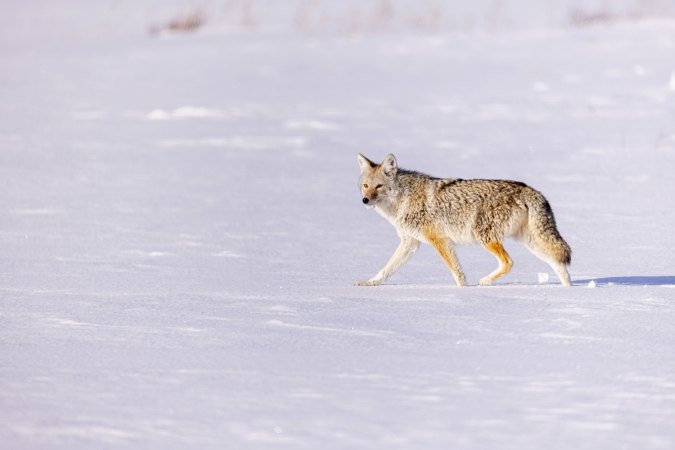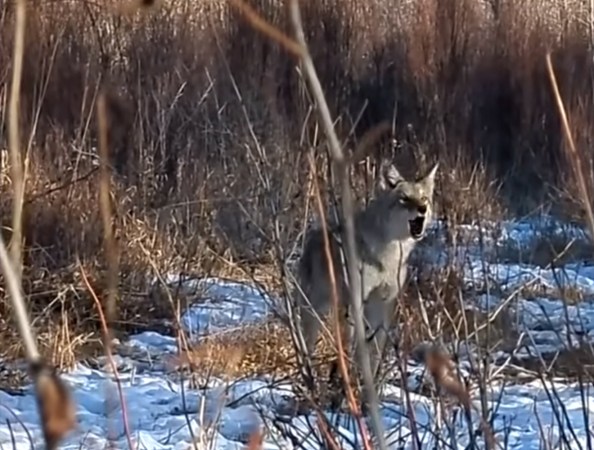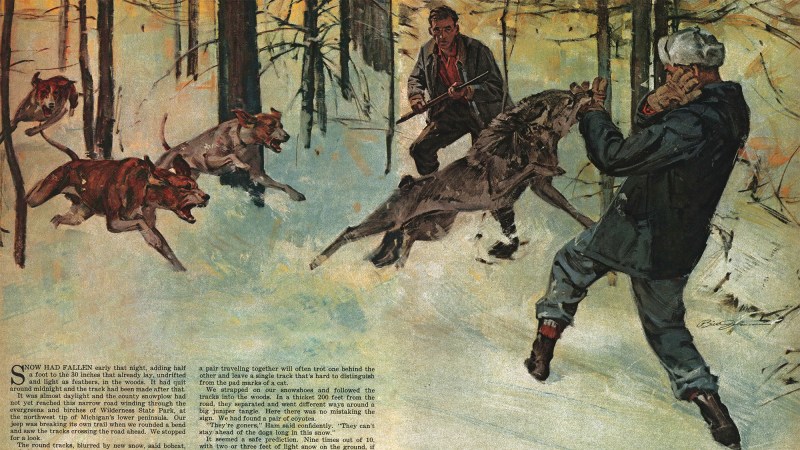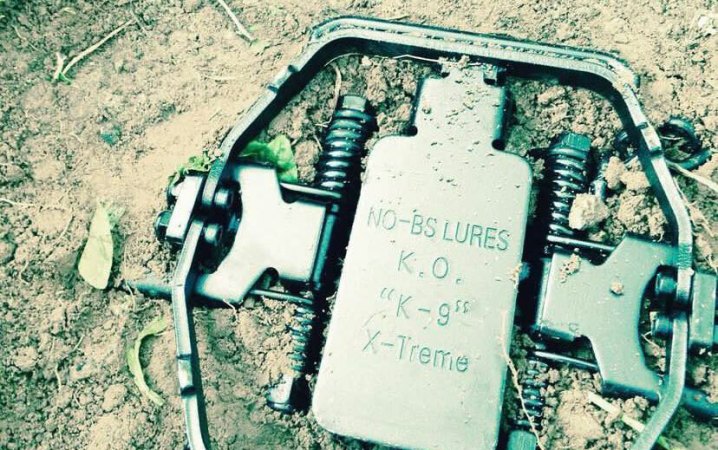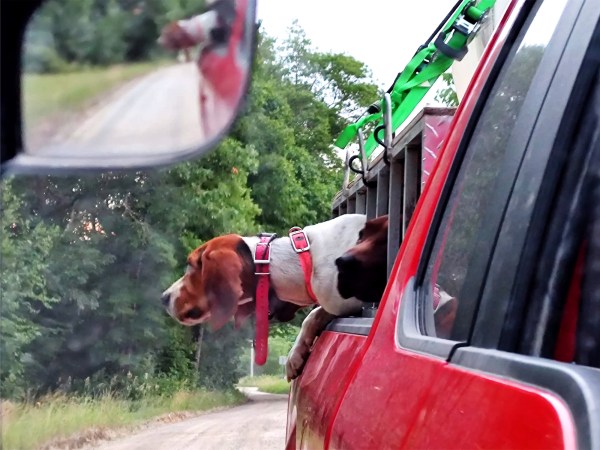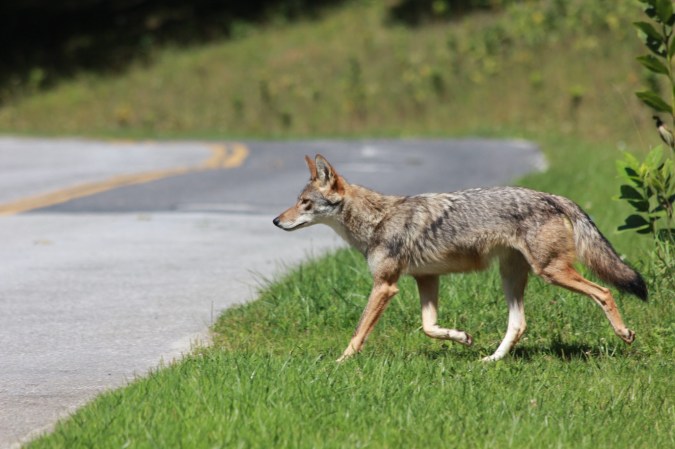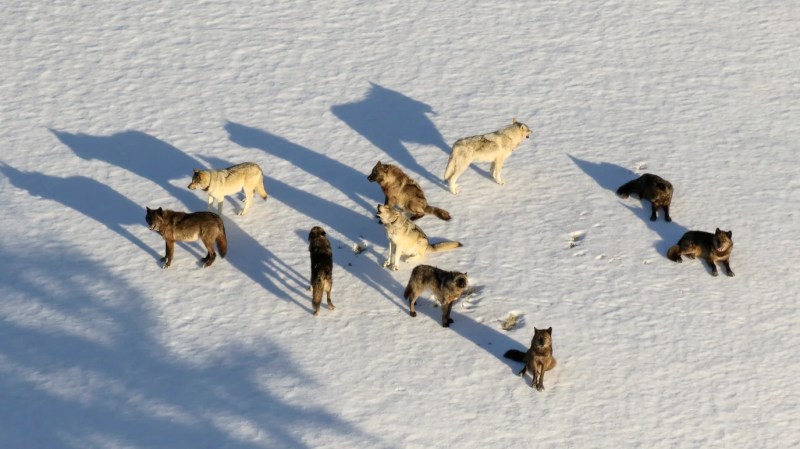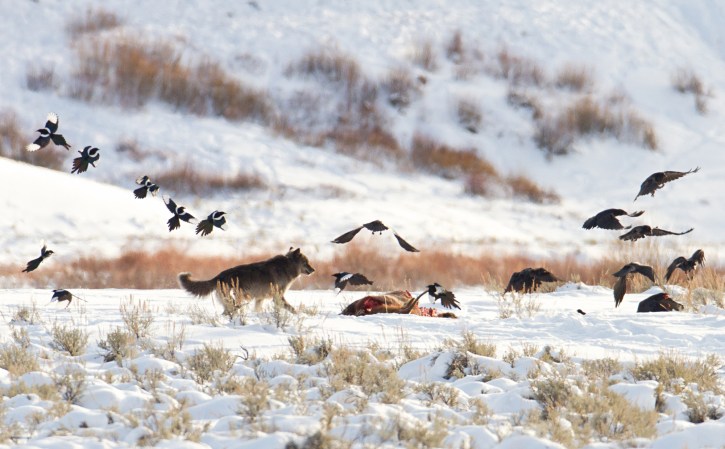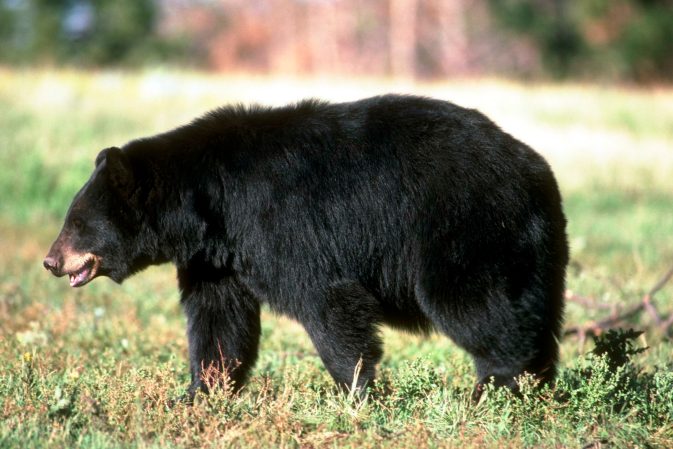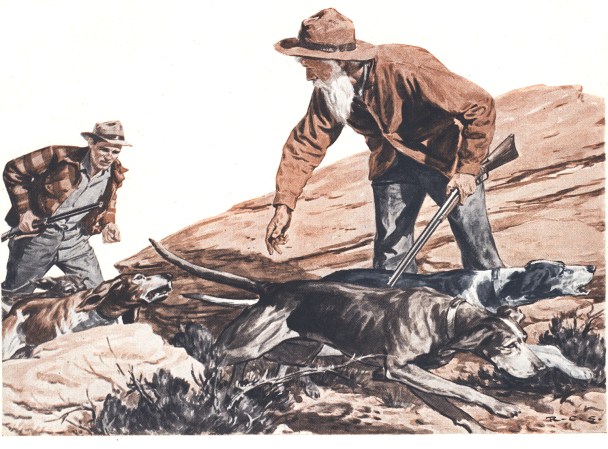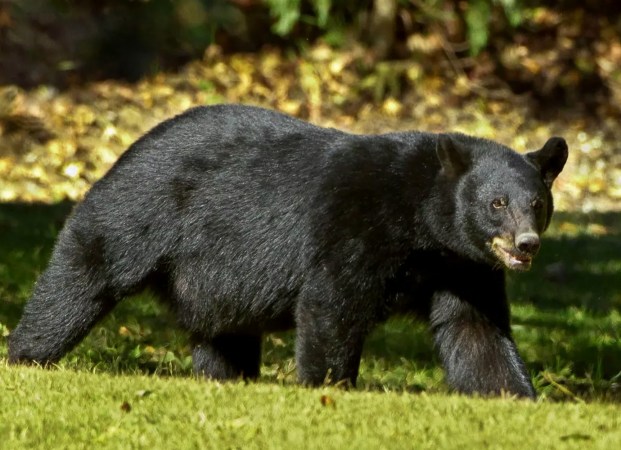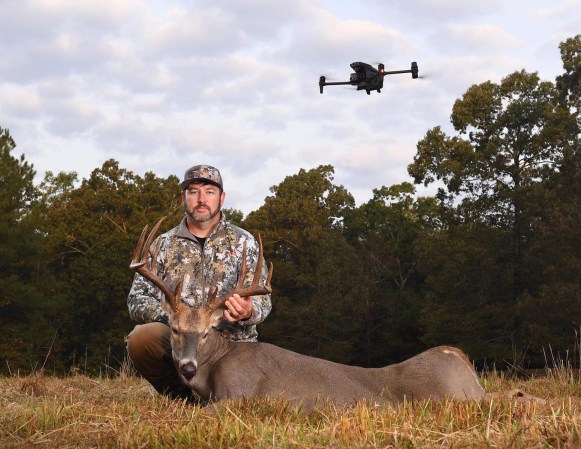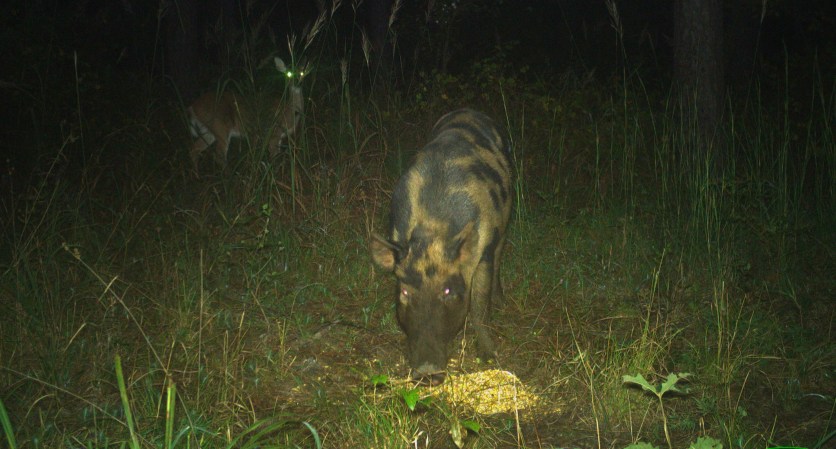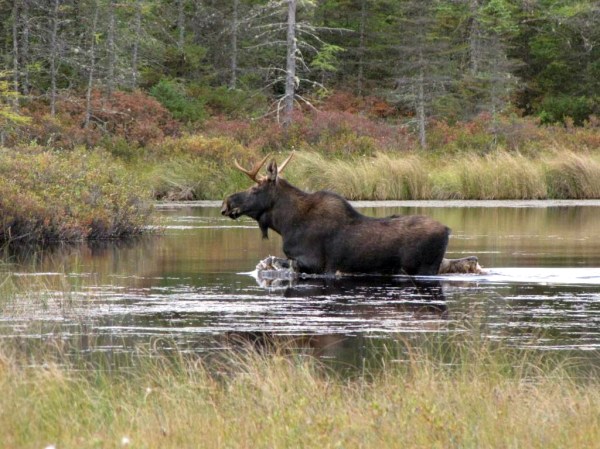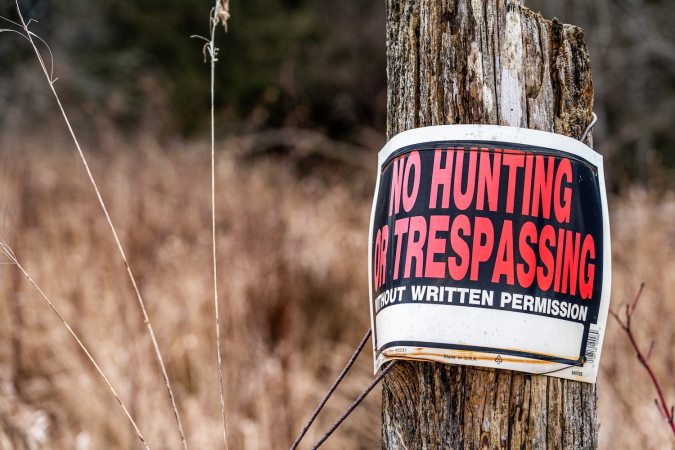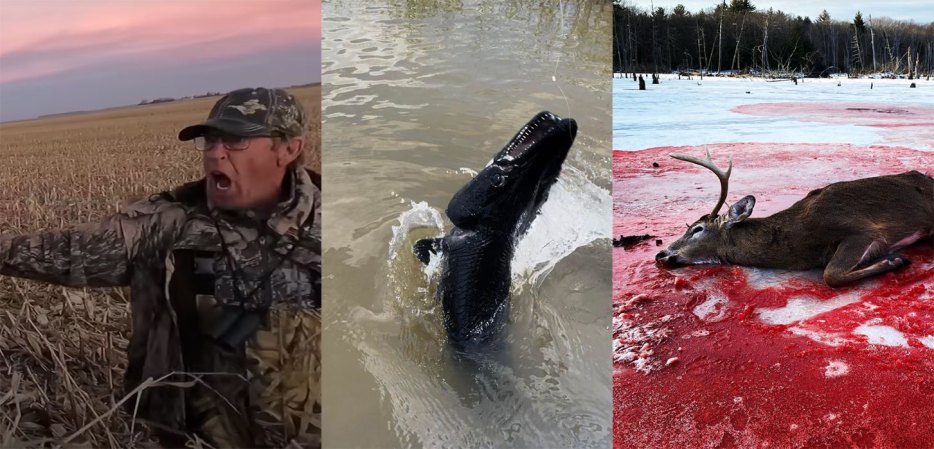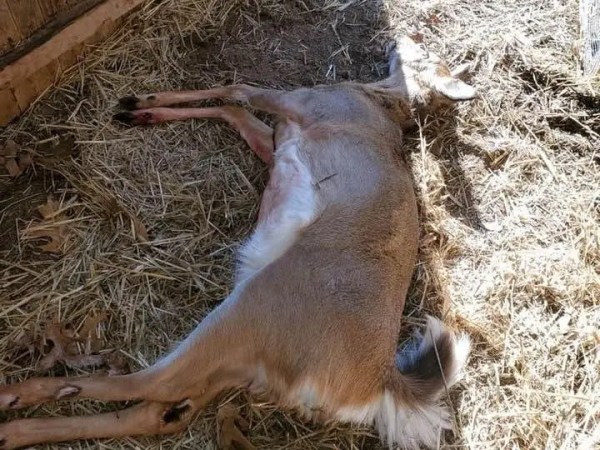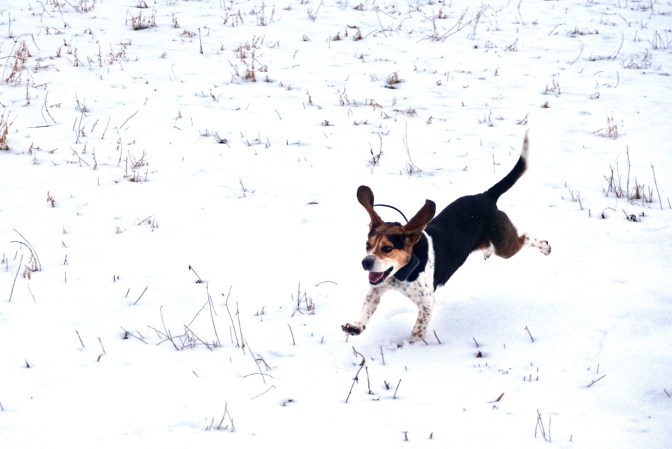A heavily amended version of a bill to overhaul the Vermont Fish and Wildlife Board passed the state Senate on Tuesday following substantial pushback from conservationists and the Vermont Governor’s promise to veto the original bill. It now heads to the Vermont House of Representatives for consideration. The first version the Senate Bill 258 would have changed the board’s composition to add more non-hunters, among other changes, and ban coyote hunting over bait and with dogs.
The revised version of S.258 would still transform the Wildlife Board from a decision-making body to one that advises and oversees the Vermont Fish and Wildlife Department, which would assume all decision-making authority over hunting, fishing, and trapping in the state. The original bill also required that members of the new board equally represent hunters, anglers, and trappers as well as wildlife watchers, photographers, and birders. That clause has been replaced to require that members simply “provide balanced viewpoints.” This change stemmed from the fact that the original version of S.258 would also have expanded the scope of the board beyond just hunting, fishing, and trapping rulemaking to advise on everything VFWD managed, including nongame species and habitat. Now, the new board would only advise on hunting, fishing, and trapping regulations.
The amended bill would leave the appointing power for 14 members to the Governor. But legislative leaders would appoint two additional members for a 16-member board. Between two legislative appointments and the clause requiring balanced viewpoints, there is still a chance that anti-hunters end up on the board — which could make VFWD’s job extra difficult when it comes to setting hunting, fishing, and trapping regulations while under the board’s oversight. (Taking over hunting, trapping, and fishing rulemaking will also add an immense amount of additional work to VFWD’s plate, Commissioner Christopher Herrick tells Outdoor Life.)
The bill would still ban hunting coyotes with dogs and over bait.
The amendments came about after Governor Phil Scott went on The Morning Drive and informed hosts and listeners that he would veto the bill if it passed in its original form.
“It’s something I oppose. I think let well enough alone, it’s fine the way it is,” Scott says. “We have other much bigger issues than this to address. I know [the Senate Committee on Natural Resources and Energy] spent a lot of time on this bill … but if it comes to me in its present form I would veto it. And I don’t say that very often, but this just makes no sense.”
March 20, 2024: This week, a bill to change the membership, authority, and scope of duties of the Vermont Fish and Wildlife Board took another step toward becoming law. In addition to requiring some “non-consumptive” users serve on the board, the bill would also ban hunting coyotes over bait and with dogs.
The attempted overhaul mostly comes from critics of how the board recently handled coyote hunting and trapping rule changes, Vermont Fish and Wildlife Department commissioner Christopher Herrick tells Outdoor Life. But it reflects a larger shift — one we’ve seen in other parts of the country — toward a more partisan approach to wildlife management than the default trust in agency biologists, managers, and other subject-matter experts. Most notable is Washington, where a wildlife commission recently staffed with multiple preservationist, anti-hunting members voted in 2022 to end the spring bear season, despite the Washington Department of Fish and Wildlife’s stance that it was ecologically sustainable.
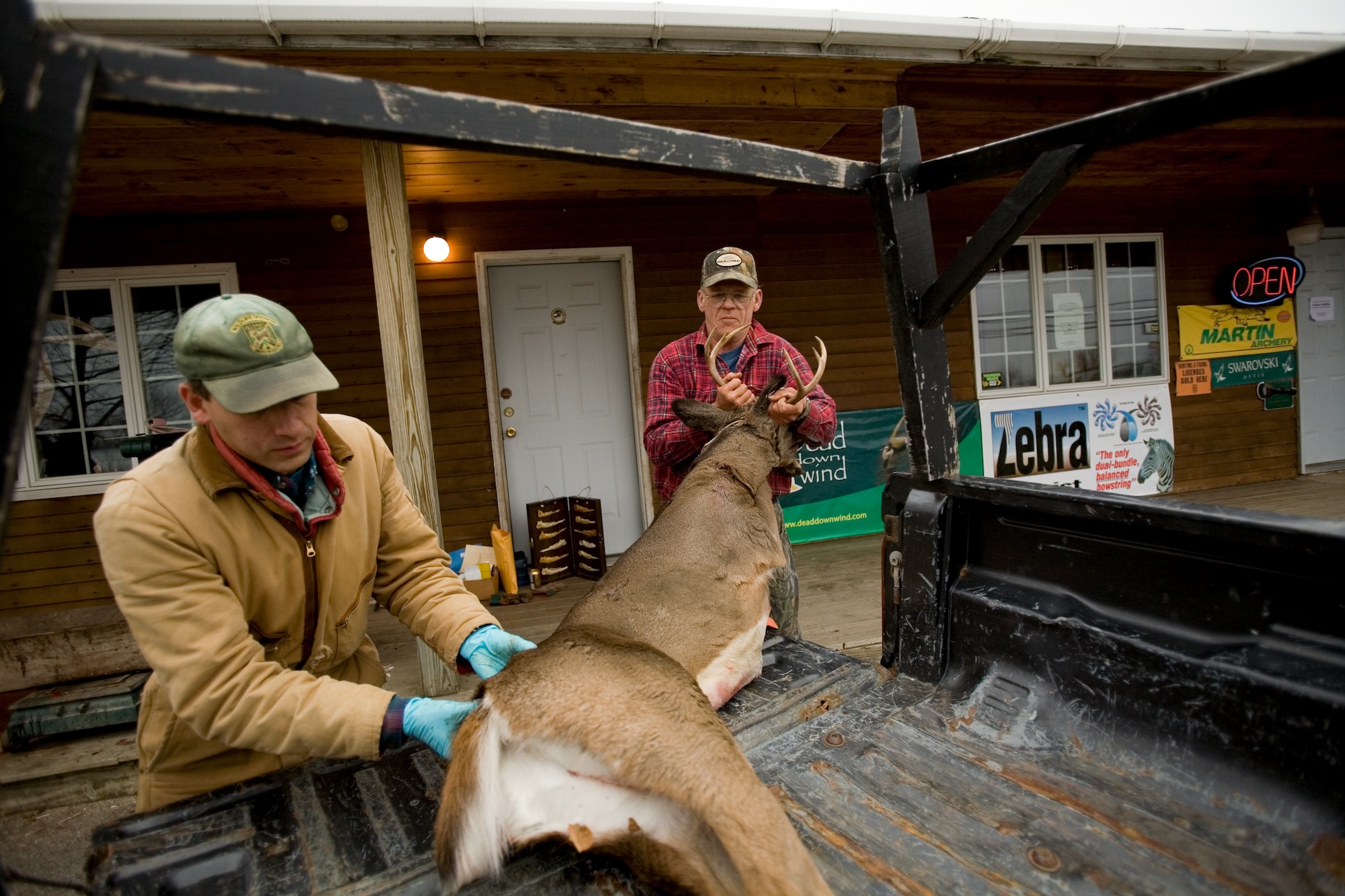
Photo by Robert Nickelsberg / Getty Images
Related: What Happens When Anti-Hunters Join a State Game Commission and Take Charge of Hunting Seasons
In addition to the coyote baiting and hounding ban, Vermont Senate Bill 258 would dismantle and restructure the board with members from varied backgrounds through a new selection process. It would also require that VFWD take over the board’s decision- and rulemaking powers. So if this bill becomes law, (and it looks like it might), then a birder, for instance, would get the same amount of clout that a duck hunter would — and VFWD would have to report to both when setting seasons, establishing Vermont’s antlerless hunt, and making other rules.
Like the regulatory bodies of wildlife agencies in other states, Vermont’s board is currently comprised of governor-appointed citizens. Those 14 members, one from each of the state’s 14 counties, oversee hunting, trapping, and fishing. While they aren’t required to have degrees or career backgrounds in wildlife biology or management, they are informed and guided by those who do: VDFW employees.
But their perceived lack of qualifications — and what many consider an undemocratic selection process — are part of why the bill’s proponents are trying to change the status quo. Herrick says this criticism undermines the quality work the agency has accomplished in recent years.
“If you look at the history of the Fish and Wildlife Board and Department, and the work that we’ve done, our wildlife is in a very good place,” Herrick says. “In the early seventies, we introduced wild turkeys to the state and now that’s one of our biggest game seasons, in May and in the fall as well. We have a healthy and vibrant deer herd. We have a good moose population that’s being managed very well. That doesn’t mention the work we do with our flora. To use a trite phrase, if it ain’t broke, don’t fix it.”
Our wildlife is in a very good place. We have a healthy and vibrant deer herd. We have a good moose population that’s being managed very well. That doesn’t mention the work we do with our flora. To use a trite phrase, if it ain’t broke, don’t fix it.
—Christopher Herrick, Vermont Fish and Wildlife Department commissioner
On Tuesday, the Senate Appropriations Committee voted favorably on the new structure proposed by the most recent amendments to S.258. The bill would require 10 board members to be appointed by the state legislature and five by the wildlife commissioner, making for a 15-person board rather than the current 14-person structure.
Members would also be selected to represent both “consumptive and non-consumptive uses of wildlife.” The current board members all have one thing in common: They identify as hunters, trappers, and anglers. But under the new structure, some members would have to represent the interests of hunters, anglers, and trappers while others represent the interests of wildlife watchers, photographers, and enthusiasts — a codified dividing line between user groups that evades definition and befuddles Vermonters who strongly identify as “all of the above.”
“One of my campmates is a biology teacher and a big birder,” Herrick says. “We spent last weekend ice fishing. We do a lot of goose hunting. He also took the time to search out a Northern hawk owl. The Fish and Wildlife Department doesn’t segregate people by type like that.”
As Backcountry Hunters and Anglers Eastern policy and conservation manager Chris Borgatti points out, other parts of the bill show a blatant misunderstanding of the agency’s current functions.
“The bill calls for a plan to be put in place for nongame species. But there’s already a federally mandated state wildlife action plan which is reviewed every 10 years or so,” Borgatti tells Outdoor Life. “Vermont has one of the most aggressive, balanced, ecologically-mindful plans in the country. So to not even be aware that there’s an existing plan that not only seeks public input but incorporates it, that was one of the signs that this was an agenda-driven effort. I think that’s the most concerning thing.”
Borgatti is referring to what concerns most hunters and anglers about this bill: that it could be an attempt to usher animal rights advocates into positions of power.
Wildlife management is an especially controversial topic in Vermont right now due to recent rule changes around hunting coyotes with dogs and trapping. In 2022, the Vermont legislature mandated that the board change their policies on both practices. Act 159 required that the board update the state’s trapping regulations to change where traps can be set, how trapped animals can be dispatched, and what types of traps are legal.

Photo by Andrew Lichtenstein / Getty Images
“You could say that we now have the most comprehensive set of restrictions to govern trapping activities in all of North America,” VFWD wildlife division director John Austin tells Outdoor Life.
Act 165 mandated that the board find a way to “reduce friction” between hounders, landowners, and non-hunting domestic pets. This resulted in a temporary moratorium on hunting coyotes with dogs until the board enacted rule changes.
Some hunters and trappers say the changes are too restrictive. Some anti-hunters and -trappers say they weren’t nearly restrictive enough. Other folks — including some hunters, trappers, anglers, and non-hunters who support them — aren’t sure what to think. The deadlock between two vocal minorities is the greatest reason to keep wildlife management decision-making as apolitical as possible, Ruffed Grouse Society Northeast regional forest conservation director Todd Waldron tells Outdoor Life. Legislating changes to the basic framework of a natural resource agency, he says, does the opposite.
“This is an interesting recurring theme of how people with [extreme] perspectives are trying to advance those agendas and use the legislative process to overturn these systems that are working for fish and game boards, forestry boards, and other agencies.”
Does the Wildlife Board Really Represent the Public?
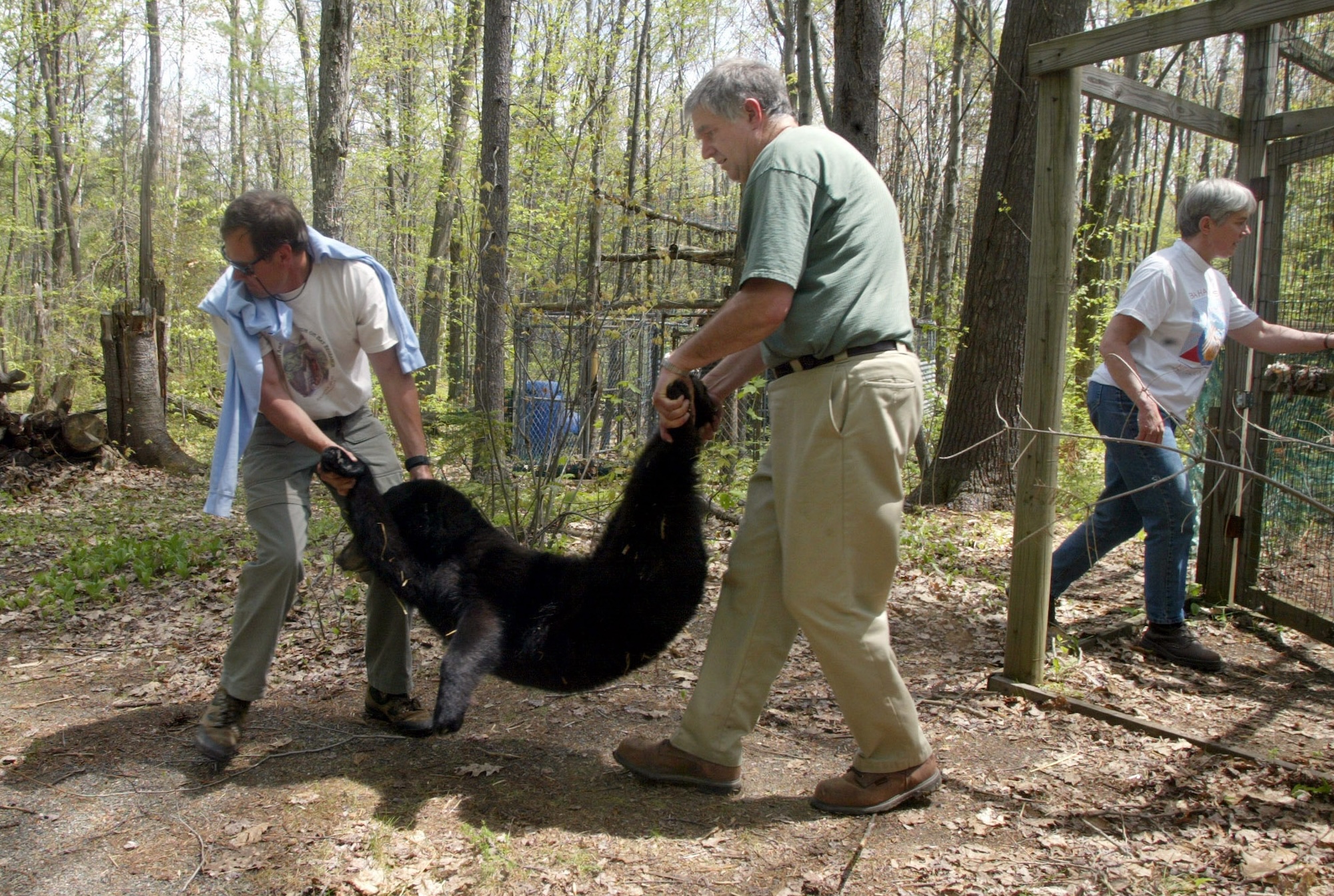
Photo by Bill Greene / The Boston Globe, via Getty Images
Of course, letting the governor appoint board members isn’t much less political than having legislators do so, as S.258 proposes. According to Brenna Galdenzi, executive director of animal-rights organization Protect Our Wildlife, it shows.
“This board is making public policy on a shared public resource, our shared wildlife, without representation from a diverse public,” she says while giving testimony on S.258, noting that the board has been accused in the past of “hostile behavior” by members of the “non-consumptive public.” “That is simply not good democracy. Why should 14 people who are not elected and do not represent the majority of Vermonters hold the power to pass regulations that affect all of us?”
But according to a 2022 VFWD survey on the public’s attitudes toward furbearer management, board members are representing the majority of Vermonters. Sixty percent of respondents strongly or moderately support the right of others to trap, even if they don’t trap themselves. Only 25 percent strongly or moderately opposed that right. (Ten percent were neutral and five percent didn’t know.) As far as hunting goes, Vermont ranks 14th in the nation for hunting license sales per 100 people.
“You could say that we now have the most comprehensive set of restrictions to govern trapping activities in all of North America.”
—John Austin, VFWD wildlife division director
In other words, while hunters, trappers, and anglers are a minority in Vermont, the non-hunting public generally supports hunting and trapping there. The real minority opinion is that of devout anti-hunters. So how they are pushing through a bill to change something the majority of Vermonters support?
“There’s a small number of people who are very vocal and well-funded who are advocating for this,” says Herrick. “They are only doing it to leverage their ability to [gain] authority by excluding hunters. It’s so narrow-minded to think that a hunter can’t be a conservationist.”
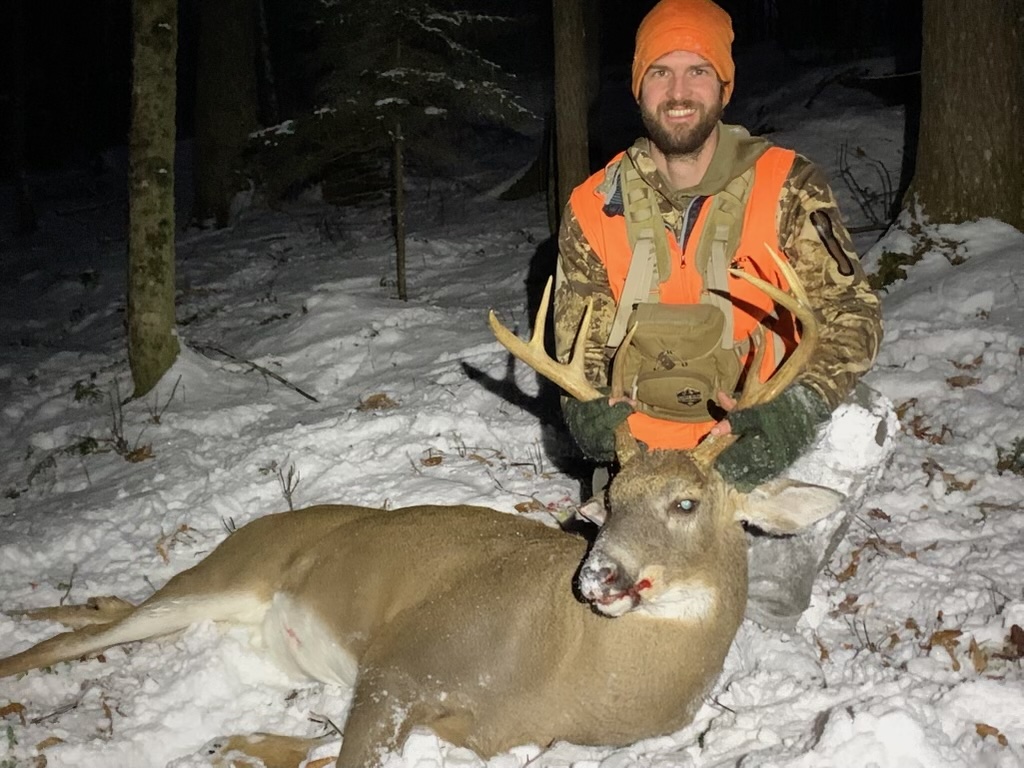
Photo courtesy of Alex Smith
And then there are hunters like Alex Smith of Bristol, who neither support nor denounce S.258 in its current form. His greatest fear? That some hunters are starting to become what vocal anti-hunters make them out to be: ineffective at self-policing bad apples and close-minded to compromise. So he sat down with Galdenzi of Protect Our Wildlife for two hours over coffee to talk about S.258. He walked away from the table with a better understanding of the inherent differences between his views and hers. Then he wrote an op-ed for the VT Digger reminding hunters that “public relations is a duty that cannot be neglected.” Especially not in Vermont.
“The natural resource industries have fallen apart in Vermont,” he tells Outdoor Life. “We also export our youth at a pretty crazy rate and replace them with retired people. So we’re not growing homegrown outdoorsmen and bringing them up through careers in wild spaces and getting them to ages where they would be useful voices. Vermont is a hunting state, especially for a state that is turning over so much population. It really culturally values hunting. But that demographic is aging and is not being replaced by a demographic that values it as much.”
So, Smith calls on those who remain to be proactive and engage in the public process in a way that reflects well on all hunters, trappers and anglers. After all, as he writes, even in a state whose residents have a constitutional right to hunting and fishing, no one gets anywhere by being close-minded — if anything, the parts of S.258 that scare him, Herrick, Waldron, and others alike are proof of that.
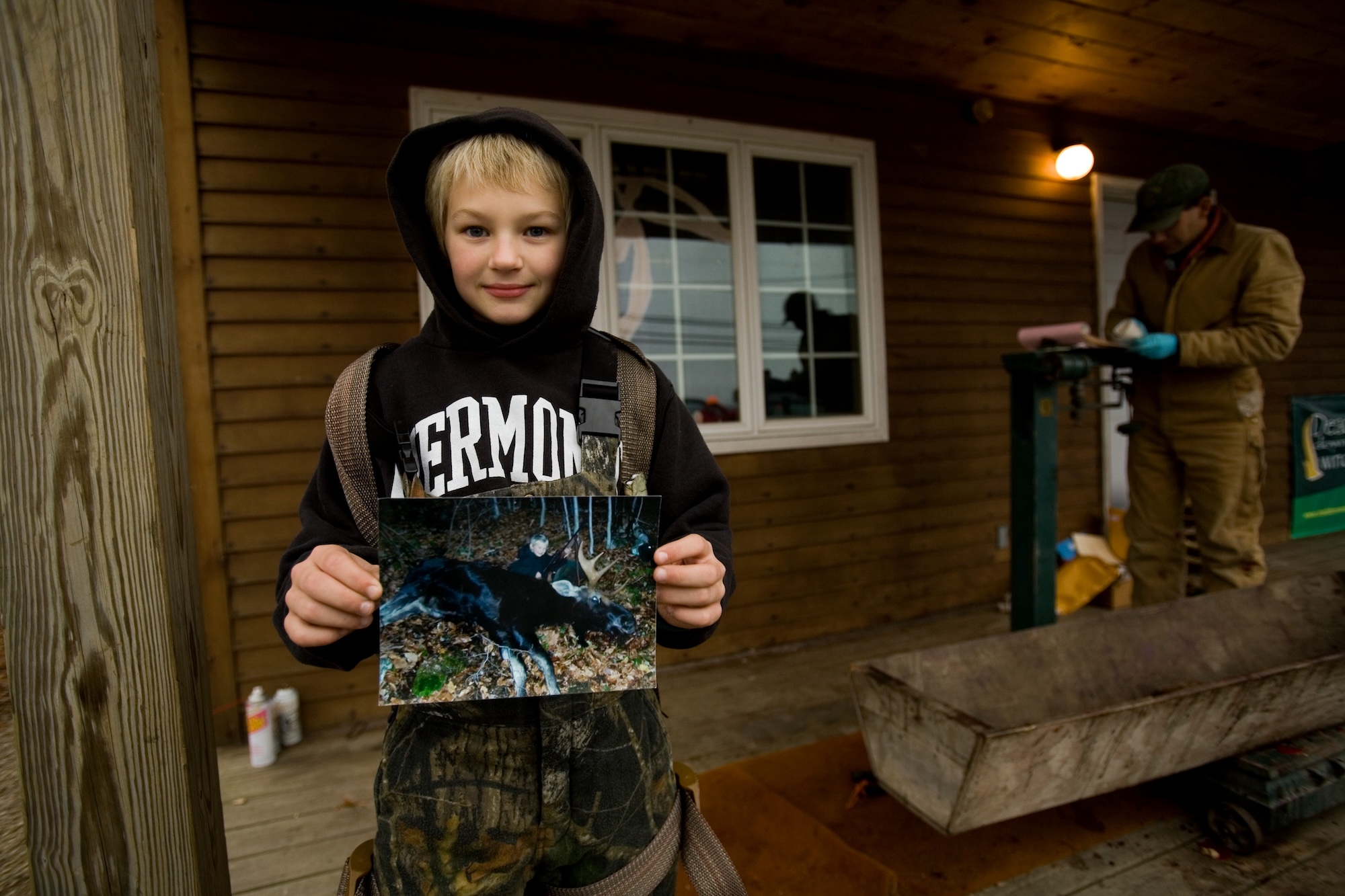
Photo by Robert Nickelsberg / Getty Images
“Neither side feels the other is negotiating in good faith and making their actual goals and desires clear, and fear of what lies at the end of the unknown slippery slope keeps us from engaging,” Smith says. “I share that fear. It’s natural. But the only answer is to meet these people at the table and try to at least understand each others’ viewpoints. These conversations can end at philosophical impasses, and it’s hard to know what to do in that event, but at least then motivations are understood and trust is built, which is a far better situation than trying to assign motivations and beliefs to people we don’t know or understand.”
Read Next: In Washington State, Hunters May No Longer Be “Necessary to Manage Wildlife”
S.258 recently passed out of the Energy and Natural Resources Committee and it currently sits with the Appropriations Committee. Once it passes out of committee, it will be read by the whole Senate, who will have to pass the bill before it can start the same process in the Vermont House of Representatives, so the debate is far from over. Commissioner Herrick tells Outdoor Life he has reason to believe it doesn’t have broad support in Montpelier, though it received a 4-2-1 vote in favor in Appropriations Tuesday and a favorable report on Wednesday.
This story was updated on March 26, 2024 to include new details about the status and content of Vermont Senate Bill 258.

